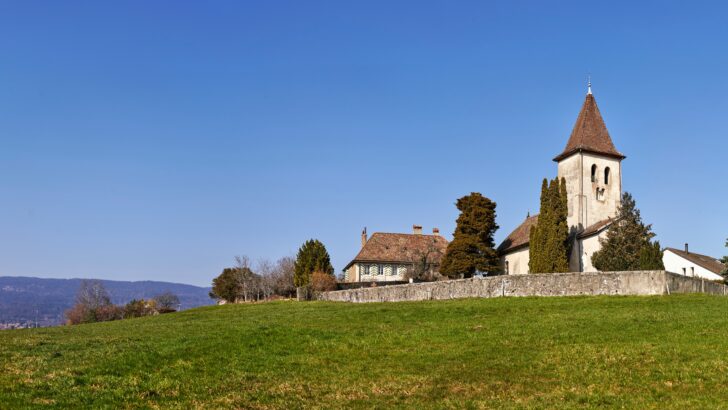These days we hear a great deal about Catholic dioceses being united, and also of parishes being run together, all because of the critical lack of priests. The penchant of the administrative mind when faced by such a crisis to make the administrative area ever larger is always apparent. But is this right with parishes? How large should a parish be to maintain a sense of community is a question that needs an answer.
I lived in London for some years in my past life. When I say London I really mean the city of London, “the City Square mile”, notorious these days as the financial centre of the UK.
I shared a flat with my brother in the Barbican. Our balcony looked out over the city from the northern wall of the ancient Roman city. Immediately below I could see the remains of the old Roman wall at Cripplegate, and beside it St Giles Cripplegate where Milton is buried. He was born a few streets away in Bread Street. Round the corner was Silver Street, where Shakespeare once lived for a short time. A panorama of Church spires spread way to the south, just as in the banner title page of the old Illustrated London News.
But in that square mile or so that the City of London enclosed how many churches were there?
When the monk Fitzstephen at the close of the 12th Century wrote the first detailed description of London according to his count there were 126 parish churches in the city, and in addition 13 large conventual parishes.
Survived
By 1924 only 109 parishes survived and the number has been further reduced by war, closure and demolition.
The same story might be told about Dublin, though the designations might be less clear cut, and the alterations made by the Reformation and the City of Dublin authorities more radical than those in the City of London.
So we can safely say that there was in the Middle Ages at the height of the Catholic Church a church in every three or four city streets. This would suggest that those 126 churches must have had some 300 to 450 parishioners.
Of course, in recent days, until the building of the Barbican, few people “slept in the City”. The rich merchants of Cheapside had moved out in mid-Victorian days, followed by the smaller city retailers, to the spreading suburbs to north and south.
Doubtless this raw estimate could be disputed. But the point I want to make is that with that large number of parishes there were far fewer parishioners per parish than we might think. But that meant that each parish was a real community in a way that parishes today are not. They were much more like a small rural parish of today than we might imagine.
Discussing this the other day with a friend who is also interested in this matter, we agreed that say 400 people, created a real sense of community and unity in a way that today’s calls for “community” cannot do.
So we should not be heading in the direction of ever and ever larger parishes; Catholics should really aim to restore the medieval size of a parish.
And a point relevant to the idea of the parish as oasis discussed above: a while ago I wrote here about how when public administrators talk about parishes, they mean “civil parishes” (such as those Google now uses to indicate where Dubliners live, as you can see on screen every day). These are not the same as the religious parishes.
But Catholics when they talk of parish and community mean only their Catholic parish. Most have little regard for the true community of a place, those who live in the civil parish.
Catholics need to be less self-centred and to really share the space that they live in with all the inhabitants of the civil parish. They could make a beginning by realising that there is such a thing as a civil parish.


 Peter Costello
Peter Costello
